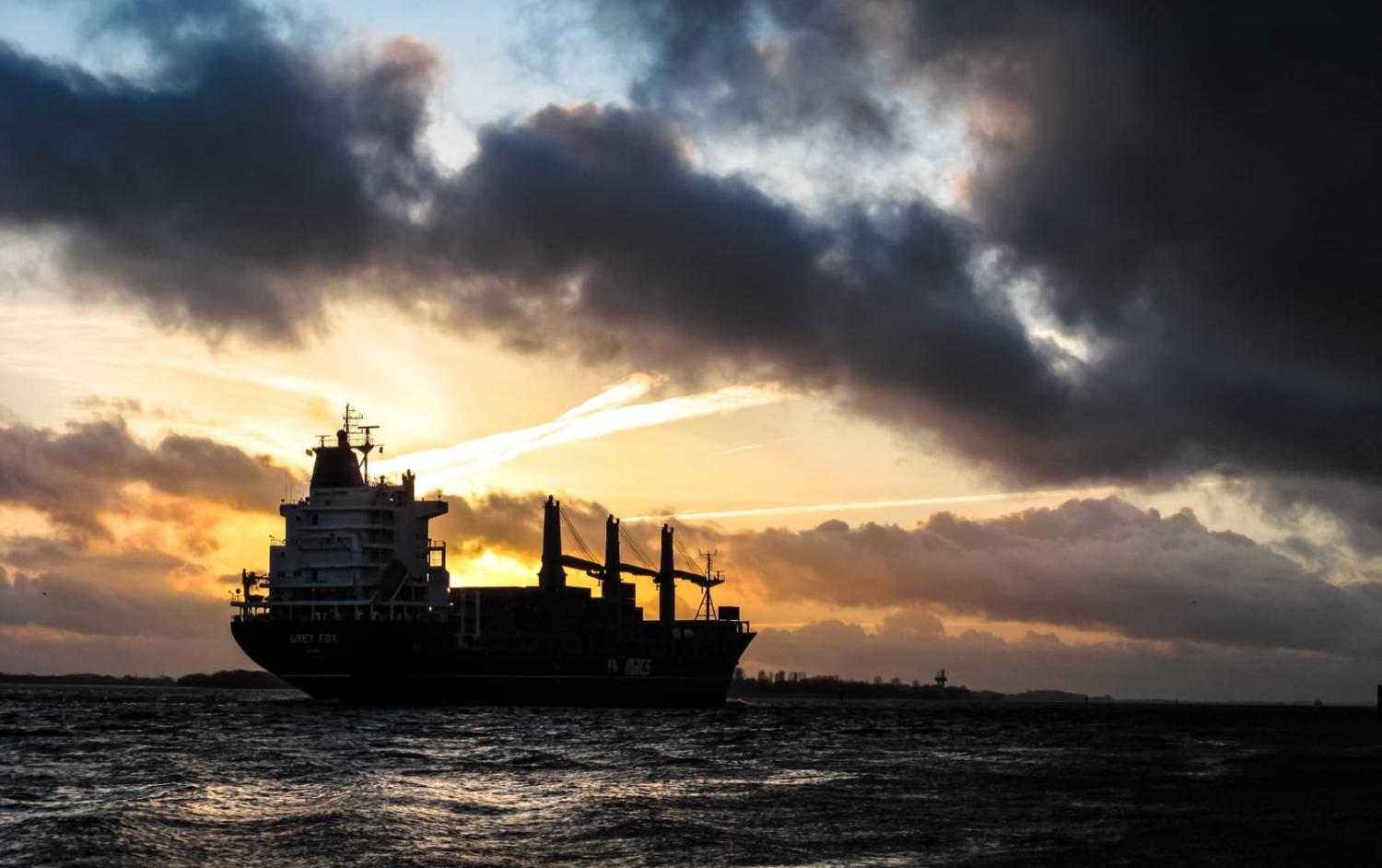On Friday, DP World Australia, the company operating container terminals at four of Australia’s largest ports, was brought to its knees by a cyber-attack. The impact on the flow of goods in and out of Australia is slowly resuming but will be significant. The attack marks a timely reminder of Australia’s absolute reliance on a vulnerable maritime system.
Only last week, the government quietly released a hugely important document for Australia’s maritime security. The final report of the Strategic Fleet taskforce was handed to government in June, with a public version along with the government response now online.
The taskforce was established as part of a Labor election commitment with the mission of advising government on how best to establish a fleet of up to 12 Australian flagged and crewed merchant vessels.
It is hard to overstate the significance of this endeavour – and why it should be considered a strategic enterprise. Australia’s dependence on seaborne trade is well known, but it is worth repeating that 99 per cent of Australia’s trade moves by sea, supporting 45 per cent of the country’s national income. And virtually all of this travels in foreign flagged and foreign owned vessels. In 2021, 6,170 individual foreign flagged vessels called at Australian ports. By contrast, there are only four Australian flagged vessels on international trade and these are LNG carriers, exporting Australian hydrocarbons to customers in north-east Asia.
The potential risks created by this situation were made plain by the consequences of the Covid pandemic on supply chains. More recently, the Defence Strategic Review has highlighted the enormous geostrategic risks posed by Australia’s lack of resilience in this area. The taskforce’s report is written with a clear eye on these issues. It also highlights less obvious but critical challenges, notably the absence of a mechanism to requisition Australian flagged vessels in circumstances short of war.
The fundamental problems that the taskforce report seeks to address are well known and long standing. The taxation and regulatory frameworks mean that it is largely uneconomical to register ships in Australia. Similarly, cost and regulation are currently adding further burdens to the already difficult task of attracting Australians into maritime focused careers. The taskforce estimates that the cost premium of running an Australian flagged and crewed vessel is $5-8 million per annum.
In response, the report makes 16 recommendations. The majority of these are relatively minor, focusing on reviewing elements of regulation and legislation, establishing cadetships and improving coordination between existing bodies. It does, however, make substantial recommendations regarding the make-up of this proposed strategic fleet, with taxation reforms to incentivise Australian flagging, a levy on vessel arrivals to help pay for the new fleet, and visa changes to encourage migration.
The taskforce also clearly believes that the government is being insufficiently ambitious. The report states it felt it necessary to give the government advice “beyond the original intent of establishing a fleet of up to 12” ships. The report noted that the 12 should be “the start of what is hoped to be a fleet that will grow to be in the order of 30–50 in number, sufficient to provide a sustainable pool of capability”.
The gulf between the ambition shown in the report, and the tentative nature of the government’s response, is marked. While the government agreed to 12 out of the 16 recommendations in full or in principle, these were primarily the minor suggestions. The substantial recommendations were generally “noted”, and the responses give little indication that government truly appreciates the significance of the issues at stake. In particular, the initial response to the proposal for a levy on vessel arrivals is to point out that “Shipping is vitally important to the Australian economy”. The obvious implication being that government is reticent about making anyone pay for the cost of a strategic fleet.
The response from industry has been negative, with Shipping Australia (SAL) describing the taskforce’s proposals as “bad policy”. In an extraordinary statement, SAL argue that “time-and-time again in crisis-after-crisis, shipping sailed through every problem and continued to deliver the goods. International shipping has never been stopped – not by disease, not by war, or strikes, or piracy”. This serves to underline how little awareness there is within the industry of the scale of the problem.
The low-key nature of the Taskforce’s work and the suggestions that the government is unwilling to devote significant financial and political resources to establishing a strategic fleet is deeply concerning. The contrast between this and the huge investments being made in defence acquisition is marked, particularly as the sums discussed are relatively small.
It also points to a continued lack of understanding of the realities of Australia’s maritime challenge. Stealthy submarines and expensive surface combatants are an essential facilitator of Australia’s security, but they are precisely that, a facilitator. Julian Corbett, one of the founding fathers of maritime strategy, famously noted that controlling the seas “means nothing but the control of maritime communications”.
In a similar vein, a former head of the Royal Australian Navy declared that the “basic foundation of [Australia’s] defence problem was the protection of the merchant ship”. However, even before this, you need merchant ships to protect, and resilient and reliable maritime infrastructure. Without a pool of domestically flagged merchant vessels that Australia can requisition and rely upon in time of crisis, the country risks being isolated no matter the capabilities of its naval vessels.
Australia is an island first and a continent second. Maritime capability must, therefore, be front and centre of any strategic approach, however it has to be maritime and not purely naval. Unless and until the Australian government acknowledges this and funds it appropriately, all of the billions of dollars spent on big grey warships will count for little.

